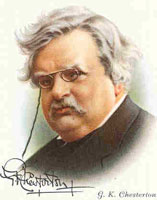Occasionally, silence is not golden but just plain yellow.
—David F. Maas
Archives for 2009
David F. Maas on silence
Miles W. Mathis on the arithmetic of art
This is the age of appeasement, of subordination. The artist is no longer the font; he is the shallow pool. Not the oracle, but the sump. The collection point of a thousand polluted expectations. The political tool of the untalented. The residue of education. The handmaiden of the self-appointed in social criticism.
For the critics have dished it out over the last hundred years, vilifying all, dismissing everyone and everything that could not be “pinned and wriggling on the wall.”
And the artist was silent.
Under the Usurper’s rule, modern art has become like Lewis Carroll’s four branches of arithmetic: “ambition, distraction, uglification and derision.”
And the artist was silent.
. . . . . . . . . .
Oh Fathers and Teachers, I claim that analysis is not art. Philosophy is not art. Politics is not art. Destruction is not art. Framing is not art. Finding is not art. Thinking is not art. Randomness is not art. Pathology is not art. Everything that a fool does easily is not art.
Fathers and Teachers, I claim that art is rare. Art requires talent. Art requires isolation. Art requires depth. Art requires subtlety. Art requires mystery. Art requires emotion. Art requires inspiration. The artist tells you what he must do, not what you must do.
Fathers and Teachers, I maintain that all art stands upon two legs: craftsmanship and character. Technique is not art. Emotion is not art. Together they may be art. Or not.
G. K. C.: ‘On Mr. Thomas Gray’ (excerpt)
Collected in All I Survey (1933).
A newspaper appeared with the news, which it seemed to regard as exciting and even alarming news, that Gray did not write the ‘Elegy in a Country Churchyard’ in the churchyard of Stoke Poges, but in some other country churchyard of the same sort in the same country. What effect the news will have on the particular type of American tourist who has chipped pieces off trees and tombstones, when he finds that the chips come from the wrong trees, or the wrong tombstones, I do not feel impelled to inquire. Nor, indeed, do I know whether the new theory is proved or not. Nor do I care whether the new theory is proved or not. What is most certainly proved, if it needed any proving, is the complete lack of imagination, in many journalists and archæologists, about how any poet writes any poem. [Read more…]
G. K. C.: Stories vs. literature
But people must have conversation, they must have houses, and they must have stories. The simple need for some kind of ideal world in which fictitious persons play an unhampered part is infinitely deeper and older than the rules of good art, and much more important. Every one of us in childhood has constructed such an invisible dramatis personae, but it never occurred to our nurses to correct the composition by careful comparison with Balzac. In the East the professional story-teller goes from village to village with a small carpet; and I wish sincerely that any one had the moral courage to spread that carpet and sit on it in Ludgate Circus. But it is not probable that all the tales of the carpet-bearer are little gems of original artistic workmanship.
Literature and fiction are two entirely different things. Literature is a luxury; fiction is a necessity. A work of art can hardly be too short, for its climax is its merit. A story can never be too long, for its conclusion is merely to be deplored, like the last halfpenny or the last pipelight. And so, while the increase of the artistic conscience tends in more ambitious works to brevity and impressionism, voluminous industry still marks the producer of the true romantic trash. There was no end to the ballads of Robin Hood; there is no end to the volumes about Dick Deadshot and the Avenging Nine. These two heroes are deliberately conceived as immortal.
—G. K. Chesterton, ‘A Defence Of Penny Dreadfuls’








Recent Comments